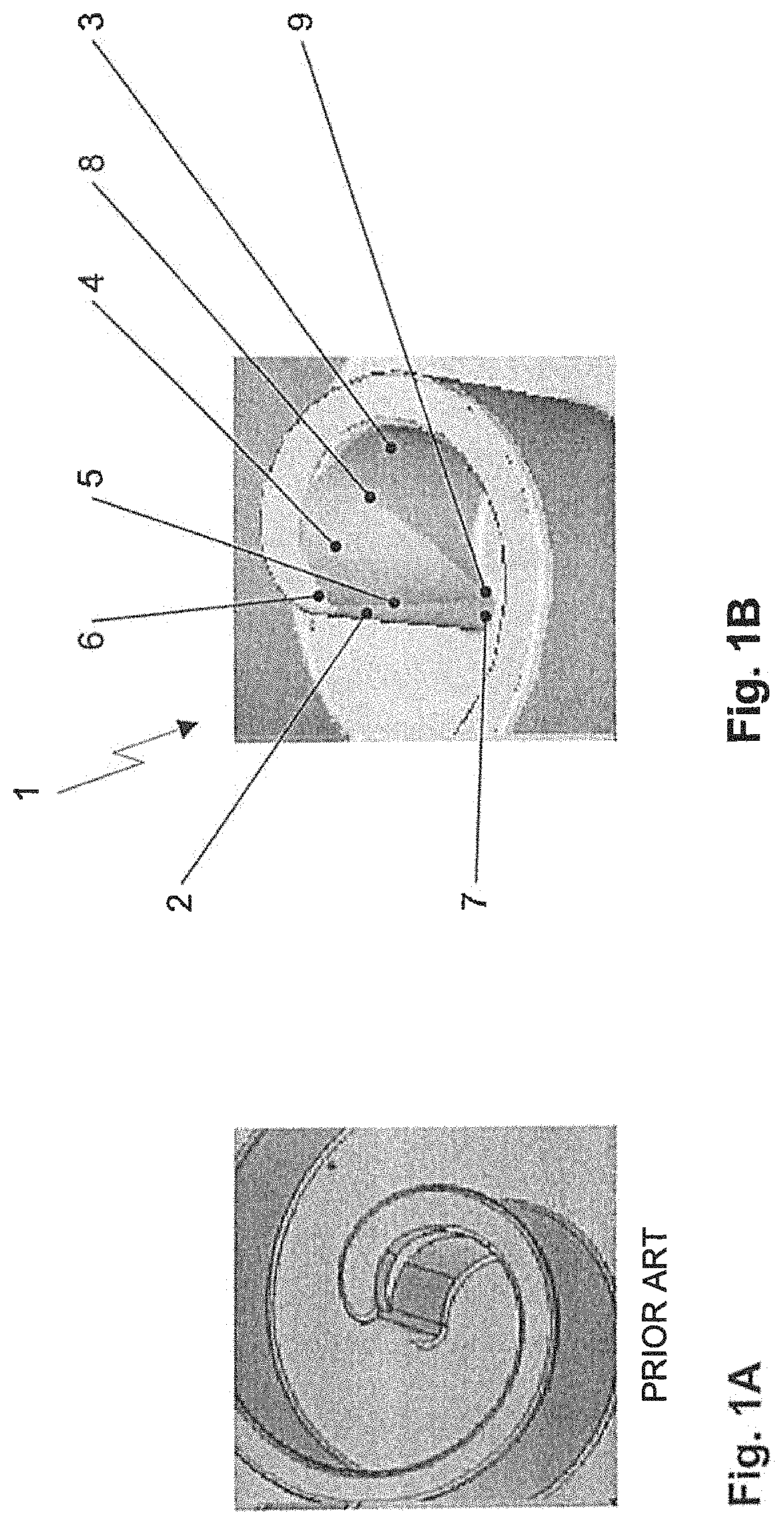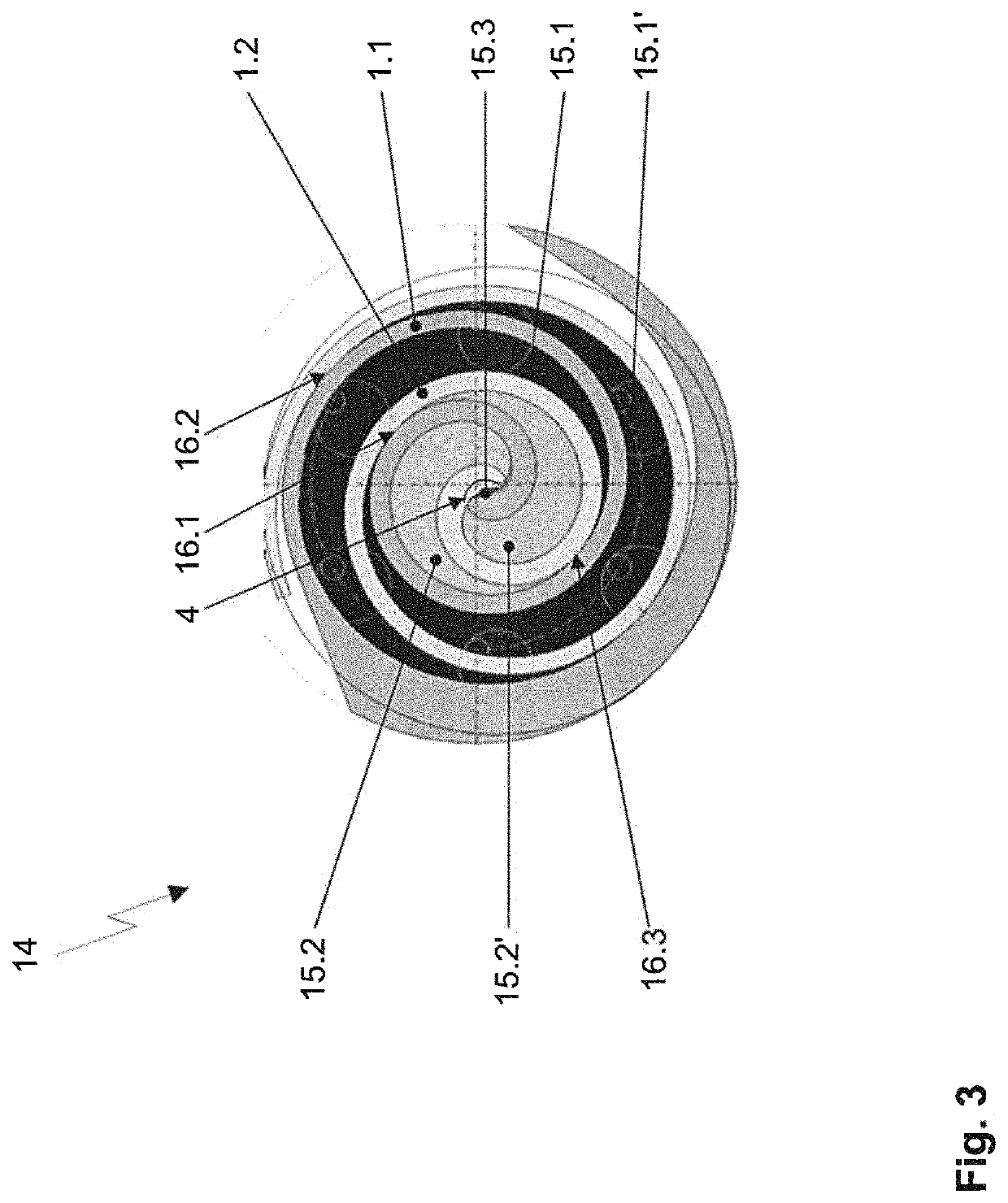Scroll compressor for a vehicle air-conditioning system having spiral wall including conical cut
a technology of spiral wall and compressor, which is applied in the direction of machines/engines, manufacturing tools, liquid fuel engines, etc., can solve the problems of increased torque and compressive force, redundancy of the contact system, and significant decrease of the wall thickness at the end segment, so as to improve the leak-tightness of the outer, reduce the overpressure, and reduce the effect of wear and tear
- Summary
- Abstract
- Description
- Claims
- Application Information
AI Technical Summary
Benefits of technology
Problems solved by technology
Method used
Image
Examples
Embodiment Construction
[0029]FIG. 1A shows a spiral of a scroll compressor with a prismatically cut form of the spiral end region according to prior art. In its spiral end region the depicted spiral comprises a vertical cut denoted as prismatic. The wall thickness in the spiral end region is significantly less than in the region of the remaining spiral.
[0030]FIG. 1B shows an embodiment example according to the invention of a spiral 1 of a scroll compressor, stated more precisely of its spiral end region. In the spiral end region at the inner end 2 of spiral 1 the concave side 3 of the spiral wall is provided with a cut 4 which has the generated shell form of a concavely curved surface of a cone segment. Through the conical form of the cut 4 an oblique edge 5 results on the inner end 2 of spiral 1, wherein the oblique edge 5 extends over the entire height of the spiral wall. Consequently, the volume of the cut 4, in accordance with its oblique shape, is distributed from its upper end 6 to the lower end 7 o...
PUM
 Login to View More
Login to View More Abstract
Description
Claims
Application Information
 Login to View More
Login to View More - R&D
- Intellectual Property
- Life Sciences
- Materials
- Tech Scout
- Unparalleled Data Quality
- Higher Quality Content
- 60% Fewer Hallucinations
Browse by: Latest US Patents, China's latest patents, Technical Efficacy Thesaurus, Application Domain, Technology Topic, Popular Technical Reports.
© 2025 PatSnap. All rights reserved.Legal|Privacy policy|Modern Slavery Act Transparency Statement|Sitemap|About US| Contact US: help@patsnap.com



